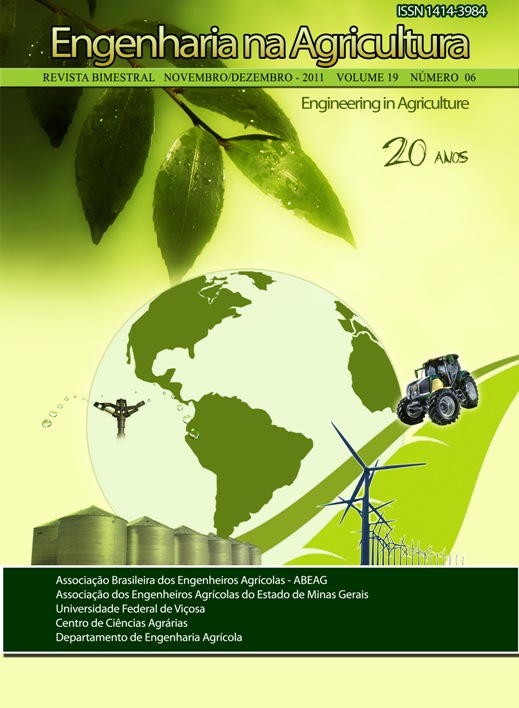ANÁLISE DA EFICIÊNCIA DE RESFRIAMENTO DE PAINÉIS POROSOS PREENCHIDOS COM ARGILA EXPANDIDA EM COMPARAÇÃO AOS DE CELULOSE USANDO TÚNEL DE VENTO
DOI:
https://doi.org/10.13083/reveng.v19i6.107Palavras-chave:
resfriamento evaporativo, painel evaporativo, eficiência de resfriamento, granulometria.Resumo
Altas temperaturas do ar, associadass à tipologia aberta e sem isolamento térmico dos alojamentos para animais ainda constituem grave problema para seu desempenho produtivo. Neste sentido, os sistemas de acondicionamento de ambientes usuais nas atividades de produção animal brasileira geralmente fazem uso de processos de resfriamento adiabático evaporativo do ar, utilizando painéis de material poroso umedecido, associado aos sistemas de ventilação em modo túnel. Diante do exposto, este trabalho teve como objetivo comparar a eficiência de placas porosas em argila expandida (cinasita) em relação às do painel de celulose (testemunha) para todas as condições de temperaturas e velocidades das correntes de ar. Foram usados painéis em três espessuras (6 cm, 8,5 cm e 10 cm) e em duas granulometrias, denominadas de granulometria 1 (referência à brita 1) e granulometria 2 (referência à brita 2). Os resultados obtidos foram interpretados com testes de hipóteses de duas médias. Foram encontrados melhores valores de eficiência para os painéis em granulometria 1 em relação à granulometria 2. Também foi verificado bom desempenho para o painel evaporativo de 10 cm de espessura quando a granulometria da argila era a 2.Downloads
Downloads
Publicado
Como Citar
Edição
Seção
Licença
Autores que publicam nesta revista concordam com os seguintes termos:
O(s) autor(es) autoriza(m) a publicação do texto na da revista;
O(s) autor(es) garantem que a contribuição é original e inédita e que não está em processo de avaliação em outra(s) revista(s);
A revista não se responsabiliza pelas opiniões, ideias e conceitos emitidos nos textos, por serem de inteira responsabilidade de seu(s) autor(es);
É reservado aos editores o direito de proceder a ajustes textuais e de adequação às normas da publicação.
A partir da submissão, o autor estará cedendo integralmente seus direitos patrimoniais da obra à publicação, permanecendo detentor de seus direitos morais (autoria e identificação na obra) e de acordo com a Licença Creative Commons, CC BY-NC.








 Esta obra está licenciada com uma Licença
Esta obra está licenciada com uma Licença 